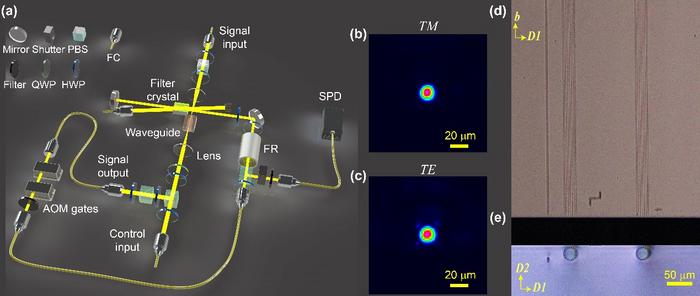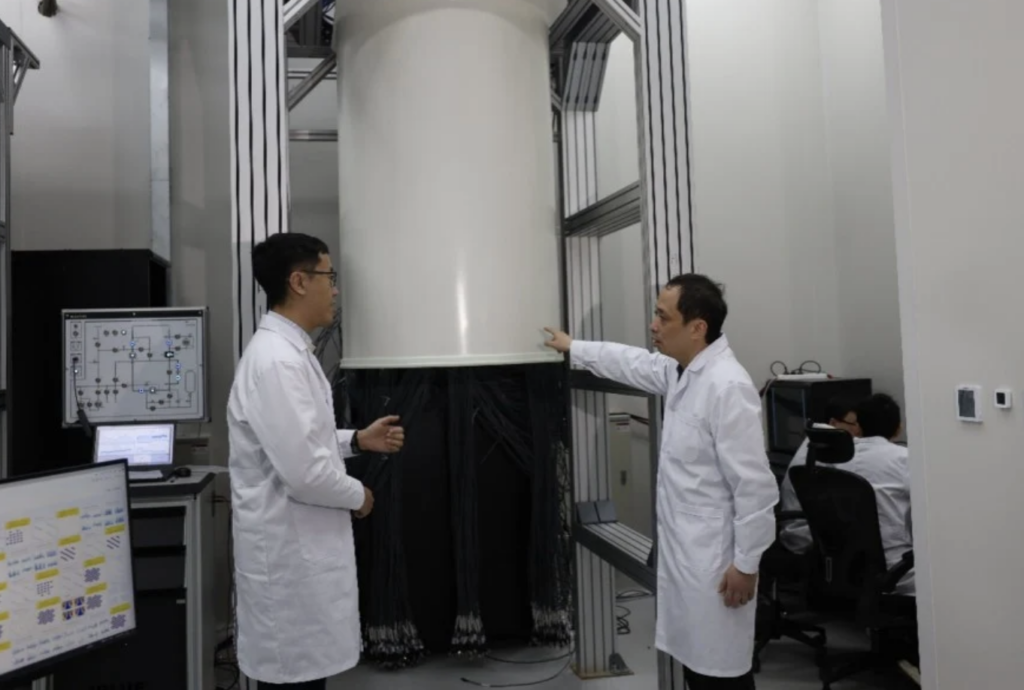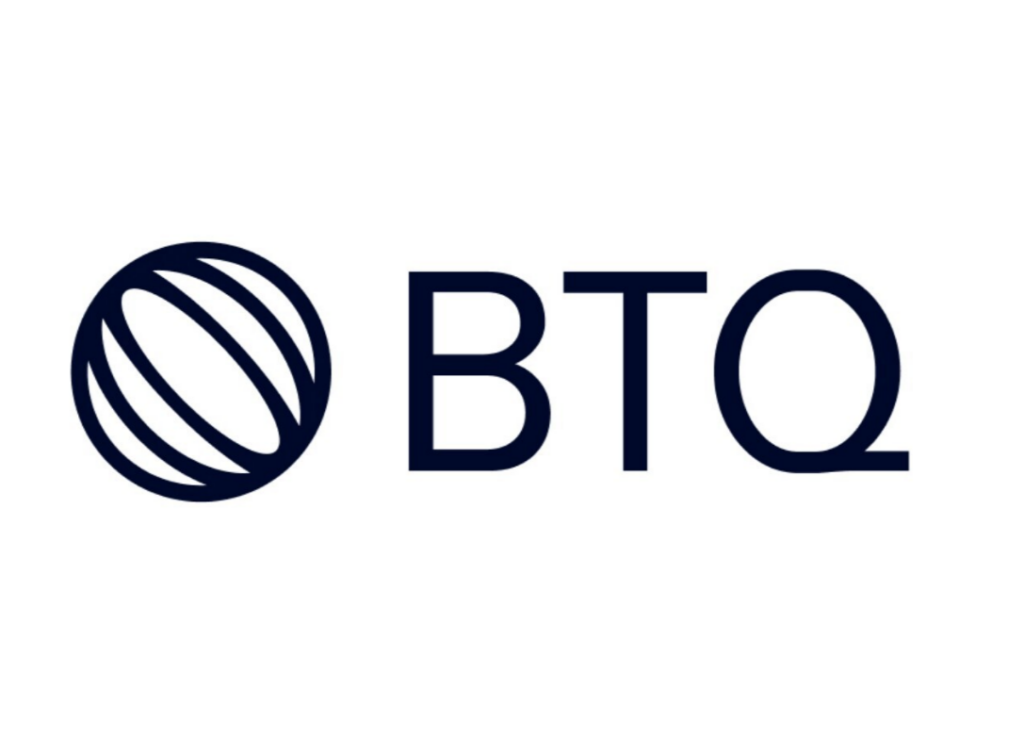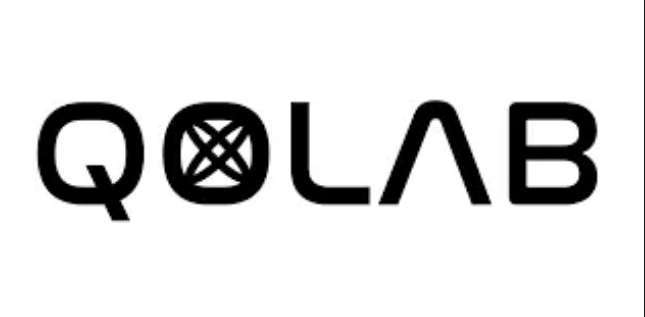Insider Brief
- Scientists have struggled to integrate spin-wave quantum storage into solid-state devices due to noise from strong control pulses, which obscures single-photon signals necessary for reliable storage and retrieval.
- Researchers at the University of Science and Technology of China have addressed this challenge by developing an integrated spin-wave quantum memory with advanced noise-suppression techniques, achieving high-fidelity, long-duration, on-demand storage.
- Published in National Science Review, the study demonstrates a critical step toward scalable quantum networks by enabling robust quantum memory capable of bridging short- and long-distance entanglement.
- Image: Schematic diagram of the experimental setup (left) and waveguide quantum memory under a microscope (Science China Press)
Scientists have struggled with storing quantum information in solid-state devices because of noise from strong control pulses, which obscures the delicate single-photon signals needed for reliable storage and retrieval. Quantum communication systems that offer super-secure interactions would likely not be scaleable without addressing this problem.
Now, researchers at the University of Science and Technology of China have developed an integrated spin-wave quantum memory that uses advanced noise-suppression techniques to achieve high-fidelity, long-duration, on-demand quantum storage, according to a statement by the researchers. They add that the work could lay the foundation for those much-desired large-scale quantum networks.
The findings, published in National Science Review, demonstrate a way to overcome the challenges of quantum memory storage and retrieval in solid-state devices.

According to the study, quantum memory is essential for enabling large-scale quantum networks by bridging short-distance entanglement into long-distance entanglement. Rare-earth ions doped in crystals have emerged as a leading candidate for implementing high-performance quantum memories, benefiting from advancements in micro- and nanofabrication techniques. However, existing integrated quantum memory systems rely on optically excited states, which limit storage times to the excited-state lifetime and do not allow on-demand retrieval.
Spin-wave storage, a method that encodes photons into ground-state spin-wave excitations, offers a solution by extending storage times to the spin coherence lifetime and supporting adjustable retrieval. Despite its promise, integrating spin-wave storage in solid-state devices has proven elusive due to noise generated by strong control pulses, which overwhelms single-photon-level signals, according to the stattement.
The USTC research group, led by Professors Chuan-Feng Li and Zong-Quan Zhou, has overcome these barriers using a specially developed device and an innovative fabrication technique, according to the statement. The team writes they used direct femtosecond-laser writing to create a circularly symmetric waveguide in a Europium-doped yttrium orthosilicate (Eu:YSO) crystal. This structure essentially creates polarization-based noise filtering within the device. The researchers further reduced noise using a suite of techniques, including temporal gating, spectral filtering and a counter-propagation configuration that allows single-photon signals to co-propagate with control pulses while maintaining signal integrity.
To demonstrate the device’s capabilities, the team implemented two spin-wave storage protocols: the modified noiseless photon echo (NLPE) and the atomic frequency comb (AFC). Under identical conditions, the NLPE protocol achieved an efficiency more than four times greater than the AFC method, thanks to its ability to preserve sample absorption effectively. The team successfully stored and retrieved time-bin qubits encoded with single-photon-level inputs, achieving a fidelity of 94.9%, significantly exceeding the classical limit and validating the device’s reliability.
The achievement is a major step toward practical applications of integrated quantum memories, particularly in the construction of multiplexed quantum repeaters and high-capacity, transportable quantum memory systems. These developments are critical for overcoming photon transmission loss and establishing robust, long-distance quantum communication networks.

















